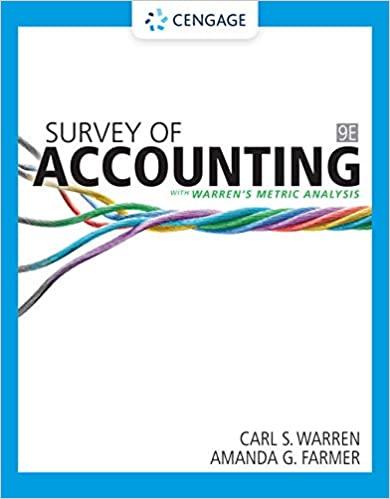Question
You are the Chief Financial Officer (CFO) of British Petroleum (BP). This afternoon you played golf with amember of the company's board of directors. Somewhere
You are the Chief Financial Officer (CFO) of British Petroleum (BP). This afternoon you played golf with amember of the company's board of directors. Somewhere during the back nine, the board memberenthusiastically described a recent article she had read in a leading management journal. This articlenoted several companies that had improved their stock price performance through effective workingcapital management, and the board member was intrigued. She wondered whether BP was managing itsworking capital effectively and, if not, whether BP could accomplish something similar. How was BPmanaging its working capital, and how does it compare to its competitors?
Upon returning home, you decide to do a quick preliminary investigation using information freely
available on the Internet.
1. Obtain BP's financial statements for the past three years from Yahoo! Finance
(http://finance.yahoo.com).
a. Enter the stock symbol (BP) in the box and click "Get Quotes."
b. Under "Financials," click "Income Statement." Copy and paste the statement into Excel (if using
Internet Explorer, place the cursor in the statement and right-click the mouse, then choose
"Export to Microsoft Excel" from the menu).
c. Go back to the Web page and under "Financials," click "Balance Sheet"; repeat the download
procedure for the balance sheet.
d. Copy and paste the balance sheet so that it is on the same worksheet as the income statement.
2. Obtain the competitors' ratios for comparison from Yahoo! Finance (http://finance.yahoo.com).
a. Enter Exxon Mobil Corporation's stock symbol (XOM) in the box at the top and click "Get
Quotes."
b. Follow the steps in Part 1 to obtain "net receivables" and "inventory" from the most recent
annual balance sheet, and "total revenue" and "cost of revenue" from the most recent
annual income statement.
c. Repeat the two steps above for Chevron Corporation (CVX)
3. Compute the cash conversion cycle for BP for each of the last three years.
a. Compute the inventory days using "cost of revenue" as cost of goods sold and a 365-day year.
b. Compute accounts receivable days using a 365-day year.
c. Compute accounts payable days. d. Compute the cash conversion cycle for each year.
4. How has BP's Cash Conversion Cycle or CCC changed over the last few years?
5. Compare BP's inventory and receivables turnover ratios for the most recent year to those of its
competitors.
a. Compute BP's inventory turnover ratio as cost of revenue/inventory.
b. Compute BP's receivable turnover ratio as total revenue/net receivables.c. Compute the average inventory turnover ratio and average receivable turnover ratio of Chevron
and Exxon Mobil. How do BP's numbers compare to the average ratios of its competitors? Do
they confirm or refute your answer to Question 4?
6. Determine how BP's free cash flow would change if BP's inventory and accounts receivable balances
were adjusted to meet the industry averages.
7. Determine the amount of additional free cash flow that would be available if BP adjusted its accounts
payable days to 75 days.
8. Determine the net amount of additional free cash flow and BP's cash conversion cycle if its inventory
and receivables turnover ratios were at the industry average and its payable days were 75 days.
9. What are your impressions regarding BP's working capital management based on this preliminary
analysis? Discuss any advantages and disadvantages of bringing the cash conversion cycle more in line
with the industry averages.
Step by Step Solution
There are 3 Steps involved in it
Step: 1

Get Instant Access to Expert-Tailored Solutions
See step-by-step solutions with expert insights and AI powered tools for academic success
Step: 2

Step: 3

Ace Your Homework with AI
Get the answers you need in no time with our AI-driven, step-by-step assistance
Get Started


